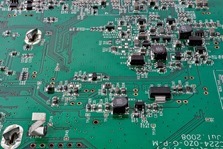Electronics can track your heartbeat, store your money, and transmit your voice over long distances. They airlift airplanes, guide vehicles to their destinations – not forgetting setting off airbags when we run into danger. It’s fascinating to contemplate how much “they” do. In this case “they” are electrons.
Electrons are minute particles that move around along designated paths referred to as circuits while bearing electrical energy.
Among the most significant discoveries of the twentieth century was how to use electrons in processing information and controlling machines. In what was dubbed the electronics revolution spurred the computer revolution which transformed many facets of our lives.
For the reasons above, we deem it essential that you understand fundamental aspects of electricity.
1. Grasp the workings of resistors
Possibly the most primary component in any circuit, resistors as their name implies, curb electron flow and scale down the voltage by transforming electrical energy to heat energy. Resistors vary in shapes and sizes.
For instance, variable resistors (or potentiometers) come equipped with a dial knob that enables users to vary resistance. An excellent example of a variable resistor is the volume control in audio devices.
2. Grasp the workings of microprocessors
To state that semiconductors have had quite a significant impact on our lives is an understatement. Semiconductors are found at the core of microprocessor chips and transistors. More on transistors later on. Any computerized device or those that use radio waves rely on semiconductors.
Nowadays, the majority of semiconductors transistors and chips are made from silicon. Perhaps you’ve heard of “silicon economy” or “Silicon Valley” – silicon is the heartbeat of any electronic gadget.
3. Understand the workings of transistors
Undoubtedly the most crucial piece in computers, transistors amplify small electric currents – to larger ones – or switch microcurrents on and off. Transistors that function as switches play the role of memories in computers and transistors that play the role of amplifiers heighten the sounds that get inside hearing aids.
Interconnected transistors form a device referred to as logic gates that perform essential decision-making functions.
4. Understand the workings of capacitors
Similar to resistors, capacitors are a vital component in circuits. Capacitors store charge and play varying roles depending on circuit design. Capacitance measures the amount of energy or charge a capacitor can bear. In its simplest form, a capacitor comprises of two conveying plates detached by an insulator referred to as a dielectric.
Capacitors also act as timing devices as they convert electrical currents to other forms of energy as well. In radios, the most important task of tuning in to stations is performed by a capacitor.
5. Understand Optical electronic (Opto-electronic) components
Some components can convert electricity to light and vice versa. Photoelectric cells (also known as photocells) produce minute electric current when light descends on them, thus play the role of the ‘magic eye’ in sensing equipment such as smoking detectors.
Contrarily, light-emitting diodes or LEDs change electric energy into light, thus work within the console of stereo equipment. More complex examples of photo-electronics include liquid crystal displays like those in laptop computers and flat-screen LCD TV sets.
For more on electronics and kindly visit our website on www.directics.com/.

